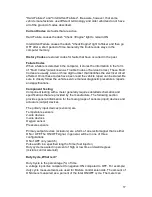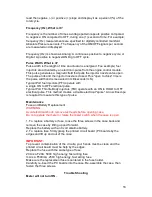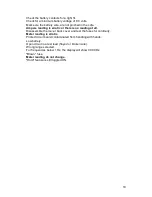
6
RPM / DIS
In the RPM function the F-1860 defaults to RPM (2) for conventional 4-cycle
engines.
BASIC DIAGNOSTIC TESTING
This section takes you through a systematic series of tests that check the
vehicle’s electrical system. These tests should be carried out before testing
individual components.
Electrical System Diagnostics
It is important to diagnose vehicle electrical problems thoroughly and efficiently.
The series of tests that follow check primary areas that are responsible for the
majority of the electrical problems found in an automobile. These basic tests
should always be carried out, even if the vehicle has a trouble-shooting code
set in the computer. A component malfunction can be caused by a basic
problem in the electrical system. Simply replacing a failed component will not fix
the problem if a defective ground caused the component failure.
The tests begin by checking the main source of power and the chassis ground
circuit connections. Ground circuits are are one of the least understood but
potentially most troublesome areas of automotive electronics. An excessive
voltage ground in a circuit affects the entire electrical circuit. That is why it is of
the utmost importance that the basic circuit is checked before consulting
computer trouble codes and individual components.
Battery Testing
(1)
Battery Surface Discharge Test
IMPORTANT:
The ignition must be switched OFF in order to avoid damage to the vehicle’s
computer while connecting or disconnecting battery cables.
Remove the positive and negative battery cables and clean the cable clamps
and the battery terminals. Reassemble and begin testing.
This following test checks for a low current discharge on the battery surface:
♦
Set the F-1860’s rotary switch to the voltage position (V).
♦
Insert the black lead of the F-1860 into the
COM
socket, and the red
cable into the
V/
Ω
Ω
Ω
Ω
/RPM
socket.
♦
Connect the negative (-) test lead to the negative (-) battery terminal.





































